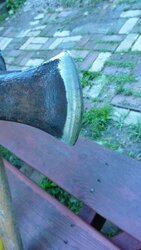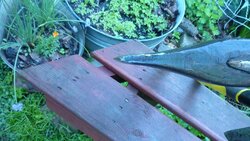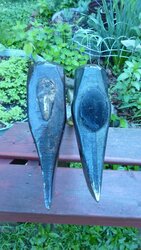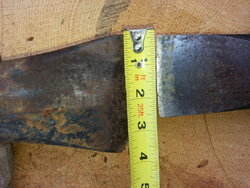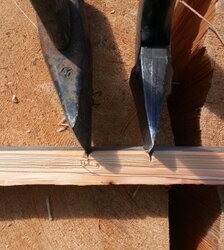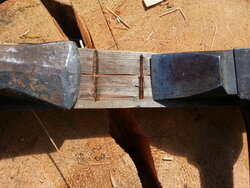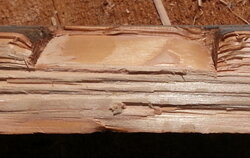I love to through double bits trying to hit the bulls-eye. I have been thinking every since I moved from central California 11 years ago, up to this big-tree country, that I would get a big tournament target. 20-30 years ago I have competed a few times in casual local party-tournaments in Sweden, and it is such a great feeling when you hit a clean bulls-eye with the shaft pointing down.
What I understand, the double bit axe, was a pure cutting axe back in the old day. I was like having two axes in one. Maybe one was sharpened for tree cutting, and the other edge for nuts and limbs?
Yes I think any axe can be restored, but if it is an old antique, I would not do any more than polish and oil, and then hang it on the wall...
What I understand, the double bit axe, was a pure cutting axe back in the old day. I was like having two axes in one. Maybe one was sharpened for tree cutting, and the other edge for nuts and limbs?
Yes I think any axe can be restored, but if it is an old antique, I would not do any more than polish and oil, and then hang it on the wall...



